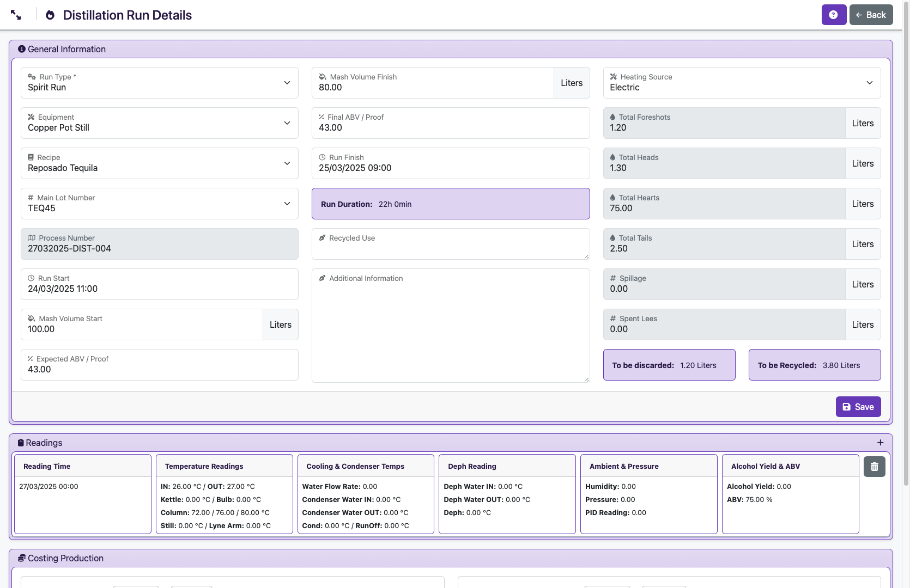How to Track Recipes and Formulations in Distilleries

Discover how modern distilleries manage mash bills, formulations, and ingredient tracking to ensure consistency, compliance, and accurate costing—at any scale.
Recipe management in alcohol production is far more than just listing ingredients. It’s about precision, traceability, and scalability. Whether you’re distilling gin with a complex botanical profile or crafting a schnapps with specific sugar and ABV targets, your distillery needs a structured, software-driven approach to manage every aspect of formulation.
Building and Scaling Mash Bills
Mash bills—the grain-based recipes for fermentation—form the backbone of spirits like whiskey, bourbon, and vodka. Managing mash bills effectively means being able to:
- Create consistent base recipes
- Scale formulations up or down without altering ratios
- Track historical changes for R&D or compliance
With proper mash bill management, your production teams can replicate results reliably while also experimenting with new grain combinations or process tweaks.
Blending and Flavor Formulas: Consistency in Every Bottle
Flavor-driven spirits—like schnapps, liqueurs, and botanical gins—require tightly controlled blending formulas. These recipes may include natural flavors, distillates, sugar, or acids. Distillery software allows you to:
- Document exact quantities and sequence of additions
- Control sugar content and ABV targets
- Ensure consistency across batches
Once a formulation is dialed in, locking it into your system means future production runs stay true to the intended taste profile.
Linking Ingredients to Inventory and Costing
Every ingredient in a recipe should be directly linked to your inventory database. This allows for:
- Real-time stock deductions during production
- Accurate costing based on raw material values
- Full visibility into usage trends and reorder points
Without this integration, your costing will always be off—and production delays from missing ingredients become inevitable.
Tracking ABV, Sugar Content, and Allergens
Regulatory compliance and product labeling rely on accurate measurement of alcohol by volume (ABV), sugar content, and potential allergens. With digital recipe tracking, you can:
- Automatically calculate expected ABV based on inputs
- Log sugar additions or concentrations
- Flag allergenic ingredients across formulations
This ensures each bottle that leaves your facility meets both legal and brand standards.
Conclusion
Effective recipe tracking isn’t a luxury—it’s essential for quality control, cost management, and compliance. By using dedicated distillery software to manage mash bills, flavor formulations, and ingredient data, producers can build consistency and scale with confidence. Whether you’re experimenting with a new gin recipe or standardizing your schnapps production, precise formulation tools are non-negotiable.
Back